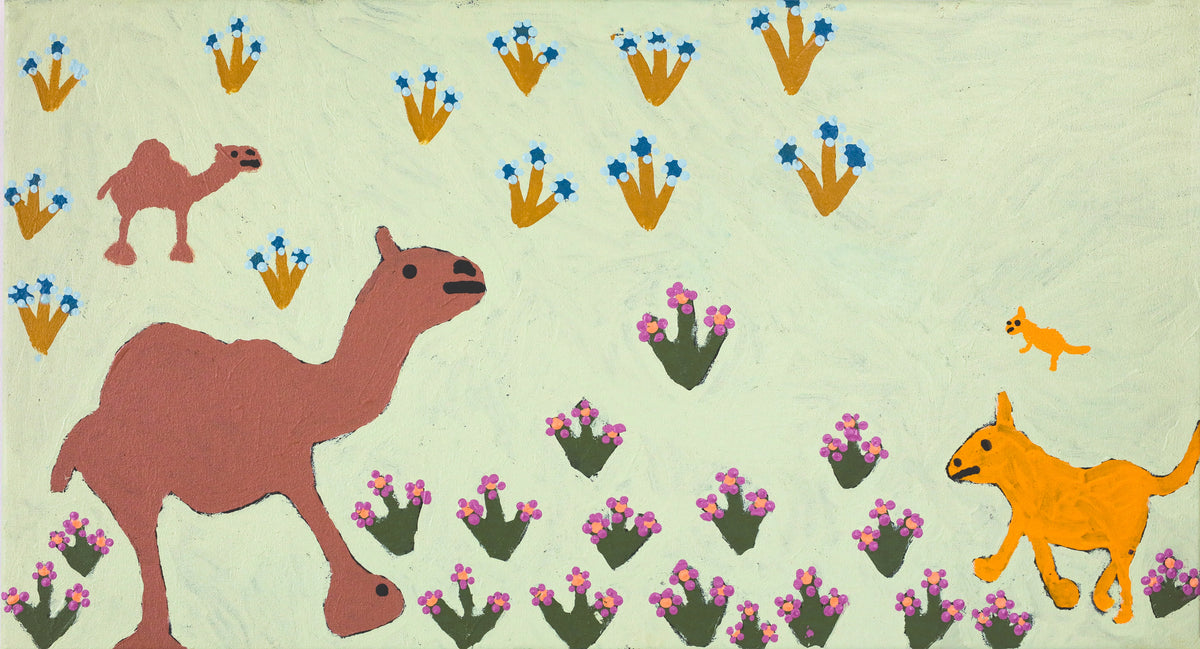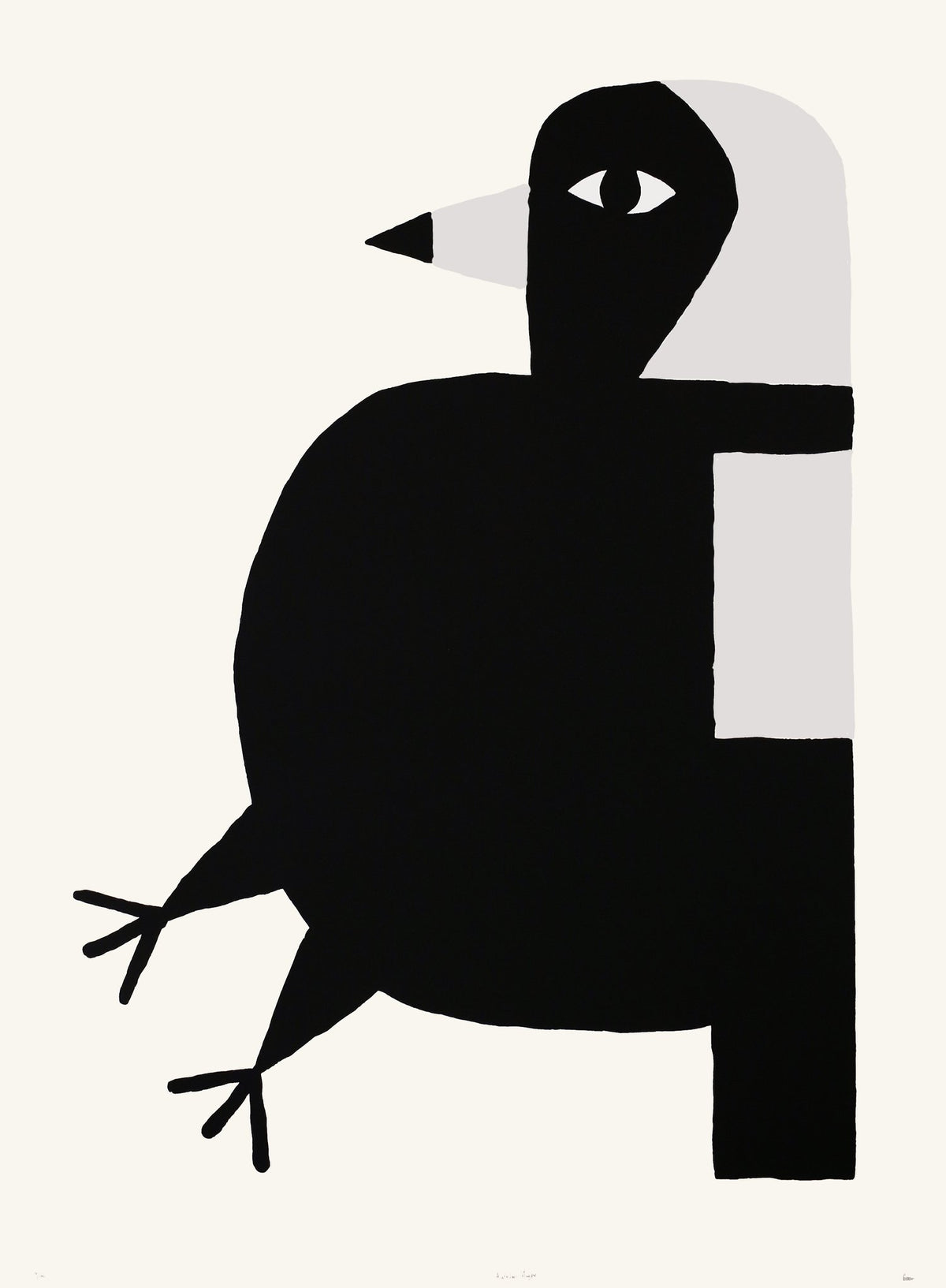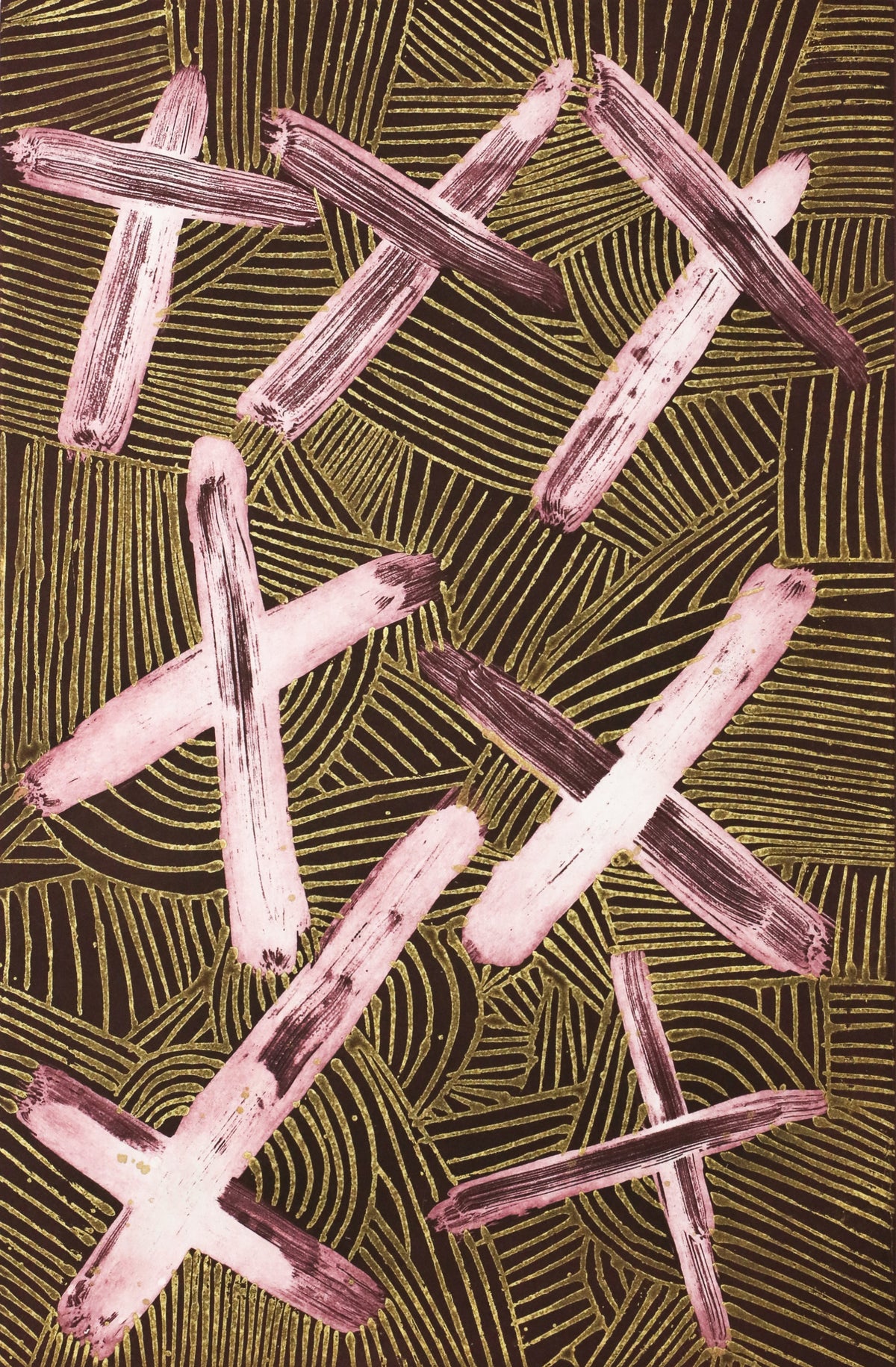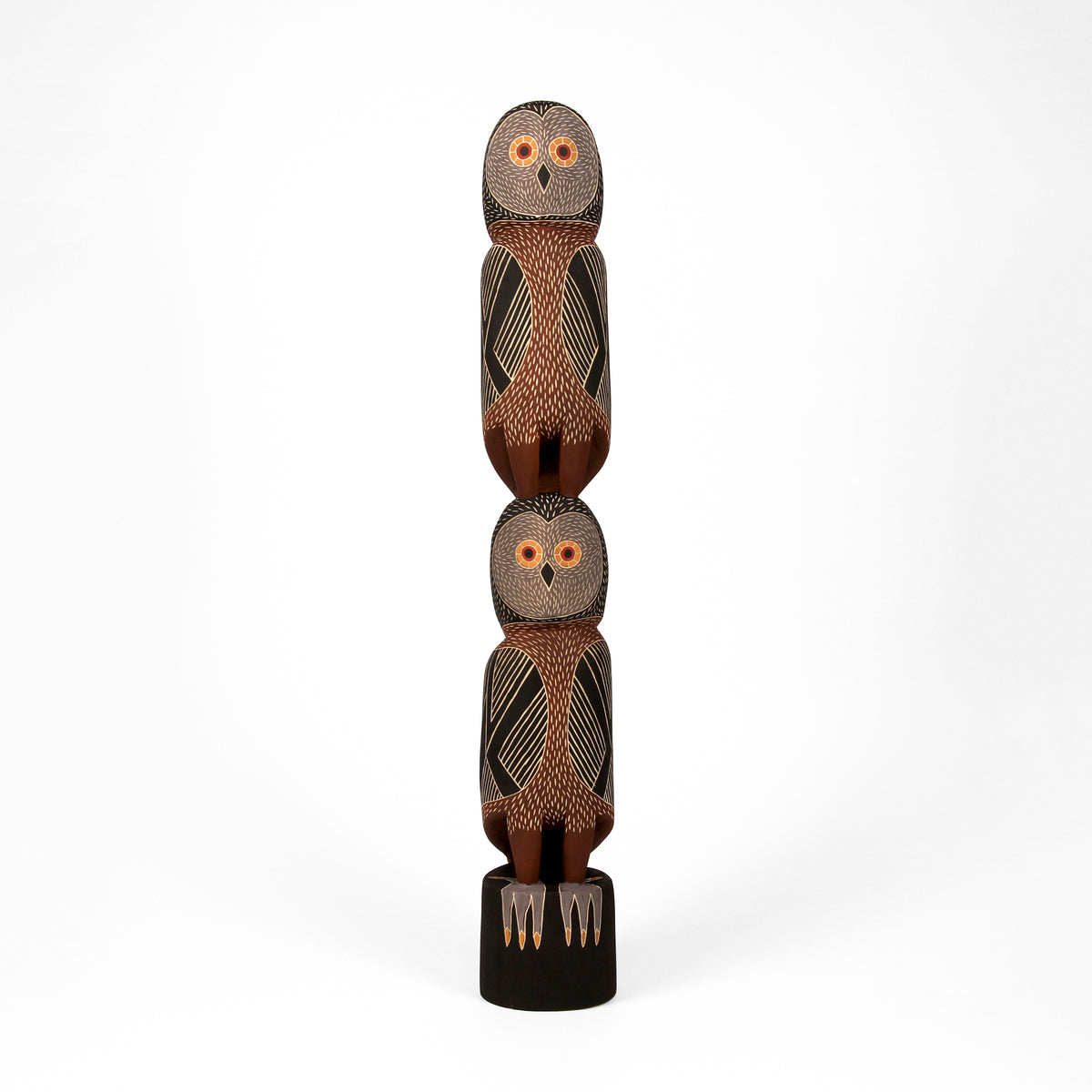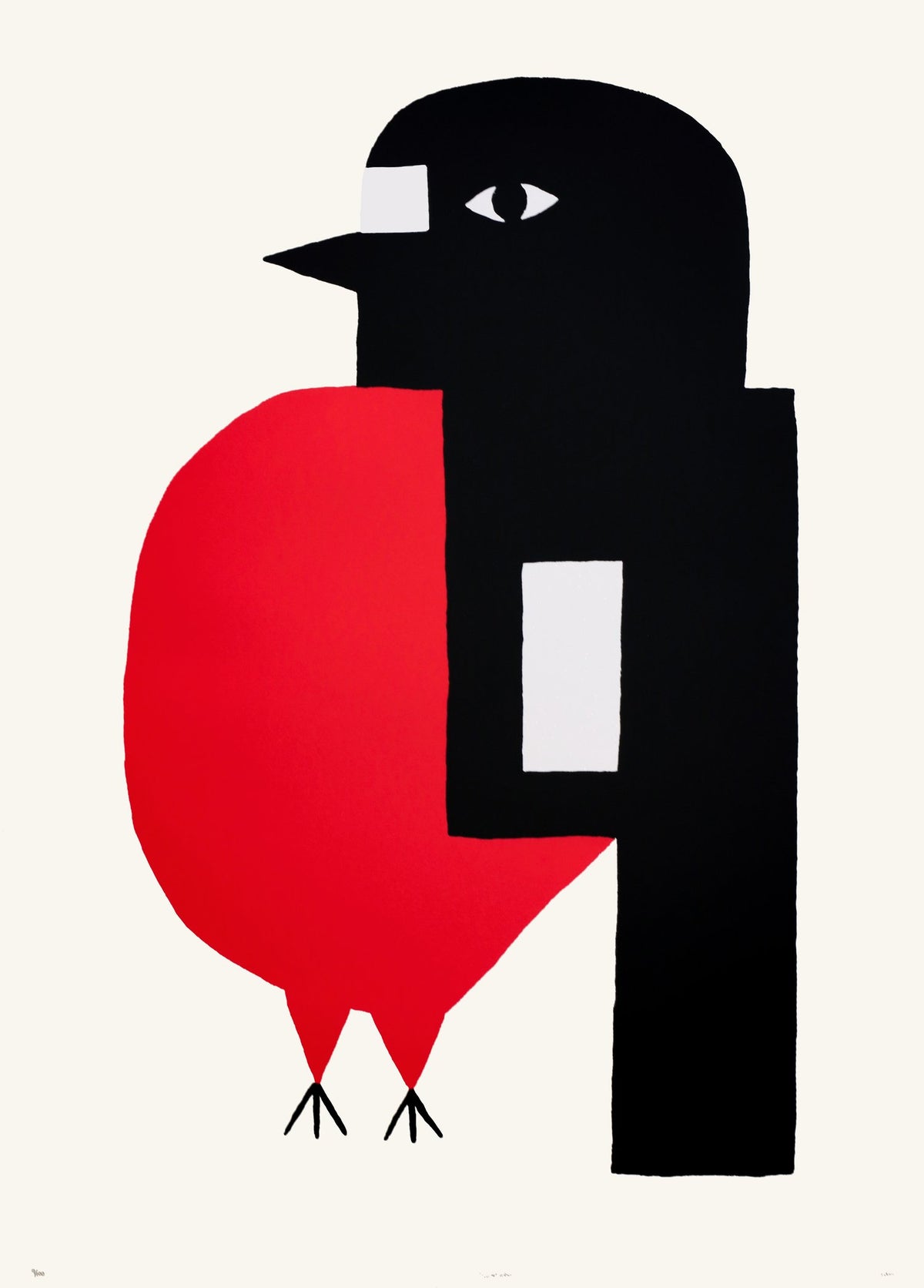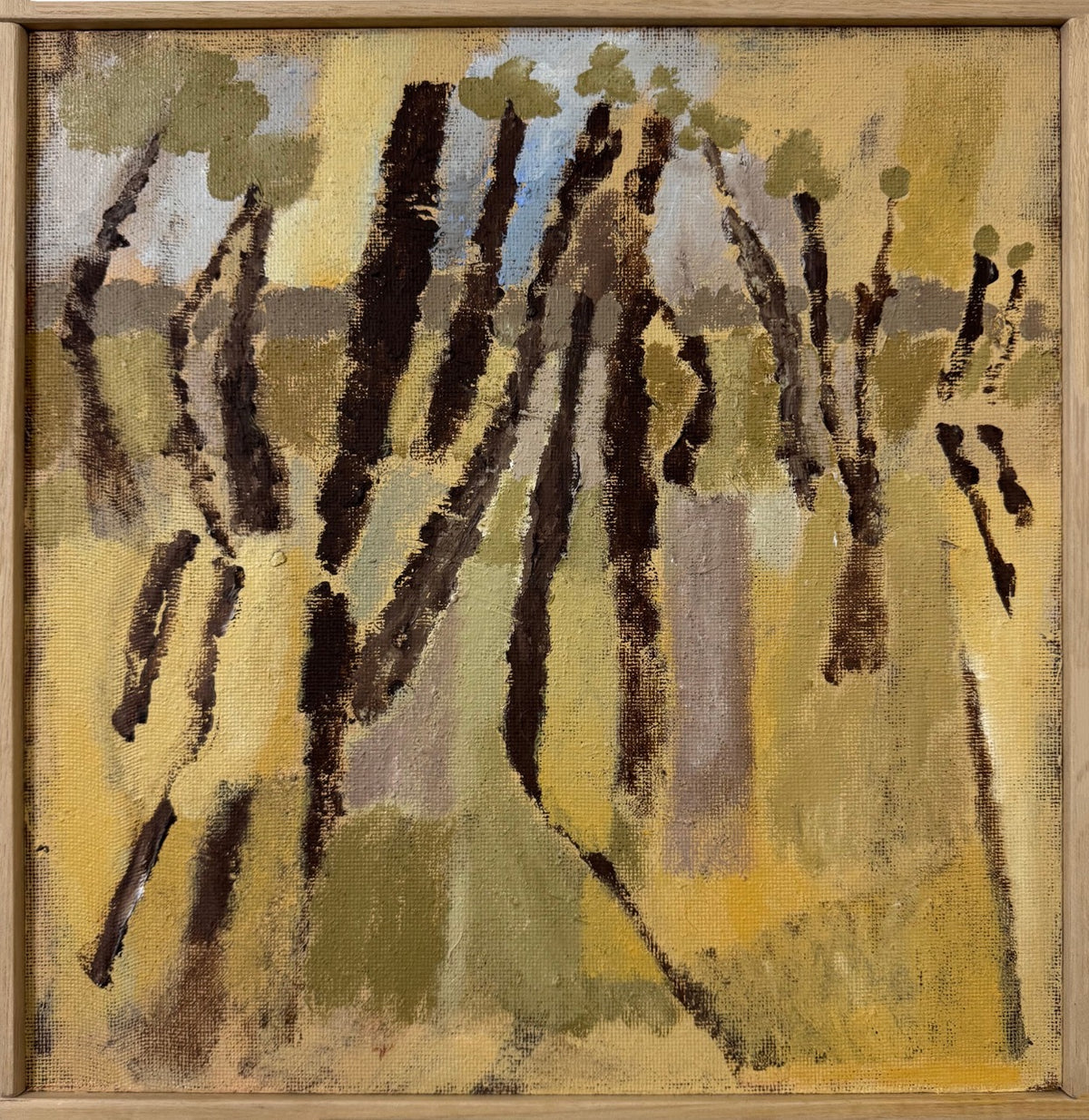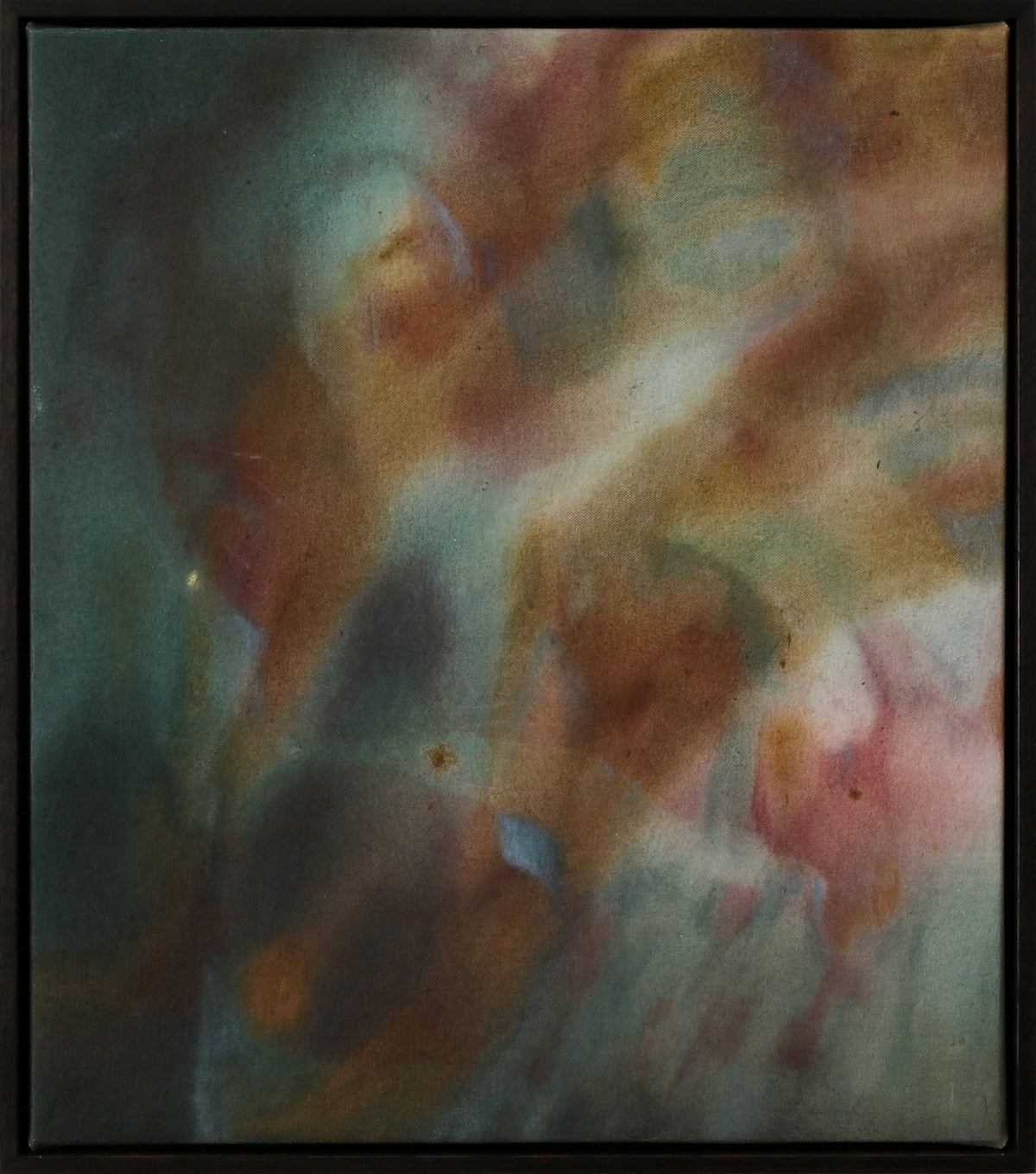Ganybu 3933-24
Long ago, two spirit men called Djirrawit and Nyäluŋ made a fish trap (Dhawurr) in the Gurriyalayala River at Waṉḏawuy. The fish trap was made of upright posts forked at the top with a long crosspiece sitting in the forks. The space between was filled in with more upright sticks (Dharpa) interwoven with horizontal sticks.
Then Djirrawit and Nyäluŋ cut pieces of bark from the Dhaŋgi tree, pounded them to release the poison, and threw them into the river. The poison in the bark turned the water black and stunned the catfish (Gaṉŋal).
To collect all the stunned fish they used their fishing spears (Gara) and double-sided triangular fishing nets (Ganybu) made of bush string (Raki’). Djirrawit and Nyäluŋ got the idea for the special shape of these nets from watching pelicans (Gaḻumay) catching fish in their big bills.
Yolŋu people learned from the two spirit men how to catch fish this way, and still do sometimes when there is a big gathering of people needing much food.
The central motif to this work represents the Ganybu or hand held net used to scoop fish out of these waters in the style of a pelicans beak.
Gaḻumay is the pelican that inhabits the flood plains. When the waters begin to dry up and the waterholes become smaller, the cat fish called Ganal are hunted by Gaḻumay. Both the Djapu and Dhudi-Djapu sing in ceremony Gaḻumay and Gaṉŋal as totemic species and for increase.
The songs of Galumay connect between this and a salt water area both visited by Galumay.
The sacred Buŋgul (dance) and Manikay (song) which embodies Galumay is reserved for very special occaisions in Djapu clan life. Much of the underlying symbolism relies on references to the Pelican’s ability to catch fish with its huge bill. In hunting yabbies in the crocodile infested billabongs the women and children fan out like Pelicans and create a ‘dragnet’ which leaves little behind. Djapu clansmen have always used a triangular, scissor-like net made from the bark of the Kurrajong to catch fish imitating their ancestral relation the Pelican.
If a member of the clan has offended against another and is required to be brought to account under Yolŋu law the Djapu escorting him to the place of justice will dance the Pelican relying on the qualities of gentle shepherding inherent in the fishing style and bill of this great hunter.
And lastly but most importantly once the long and complicated mortuary rituals of the Yolŋu are completed and the spirit of their departed kinsman has been ‘sung’ through the ancestral songlines of his kinship country back to the ‘island of the dead’, Buralku, it is the Pelican or fishtrap which catches the soul of the deceased and guides it to its destination and final resting place.
The identity of Djapu clansperson and country is formed by these constant references in song,ceremony and everyday life to the being and personality of Galumay, not to mention the large numbers of Pelicans who make this area their home. The Djapu and Pelicans continue to share their age-old homeland.
The cross hatching grid pattern is the sacred design for the freshwaters of Wandawuy, now an outstation about 150 kilometres south of Yirrkala and inland from Blue Mud Bay.
This Djapu clan outstation (and spiritual residence for Ancestral Beings Mäna the Shark and Bol’ŋu the Thunderman) is surrounded by permanent freshwater. Rains inspired by the actions of Bol’ŋu feed the rivers and fill the billabongs. Catfish and mussels, freshwater crayfish and others feed the Yolŋu and wild life. The waters are home for the shark Mäna.
The grid refers to the landscape of Waṉḏawuy – a network of billabongs surrounded by ridges and high banks. Its structure also having reference at one level to the fish trap Ganybu.
Mäna the Ancestral Shark in its epic travels comes through this way. These ancestors try to trap Mäna in the freshwater by means of these traps in the waterways. They fail. The powers and physical strength of the Shark overcome the efforts of mere mortals. Mäna’s ire and thrashing tail smash the trap and muddy the water. They witness however the strength of Mäna and sing his actions, the thrashing of his tail for one, the muddying or contamination of the water.
The grid lines having reference to the trap, the cross hatched squares referring to differing states of the freshwater – the source of Djapu soul. At ceremony appropriate participants for mortuary rites enter the shelter (woven together like the unsuccessful trap) where the deceased has been lying in state. Sacred spears tipped with stingray barbs, ,manifestations of Mäna’s teeth, stand up alongside the shelter. The sacred song cycles of Mäna in the water at Waṉḏawuy are intoned with music from the Yiḏaki (didjeridu) and Bilma (clapsticks). At the prescribed time at the conclusion of ceremony the dancers crash through the deceased’s shelter imitating the actions of Mäna at the trap. This action has reference to the release of the deceased’s soul, back to the sacred waters of Wandawuy to be reunited with its ancestors awaiting rebirth.
Waṉḏawuy literally means place of the Sharks head where in the larger context of the song cycles of Mana’s journey his head came to rest after being butchered and distributed through the land.
Edition of 30.
SHIPPING
Brunswick Street Gallery would be pleased to arrange a quote for shipping if you are unable to collect directly from us.
Please be advised that oversized and/or fragile artwork or artworks being sent to remote areas may incur additional shipping costs.
FLEXIBLE PAYMENT
Afterpay, Laybuy
EXHIBITIONS
Artworks purchased from current exhibitions will be available for collection or shipping after the exhibition has ended.
–






